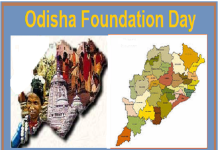Bhubaneswar: The right to adequate food is a universal human right that can only be realized when all the citizen gets physical and economic access to adequate food or the means for its procurement at every possible time without any kind of discrimination.
As defined in the 1996 World Food Submit, “Food security is considered to be prevailing all across where all people, at all times, have the physical and economic access, availability and capability to sufficient, safe and nutritious food that fulfils their dietary needs and food preferences for an active and healthy life”.
Beyond its ethical dimension, hunger and food insecurity takes an enormous toll on economies and have adverse consequences for the livelihoods and economic capabilities of vulnerable populations. The costs to society are enormous in terms of lost productivity, health, well-being, decreased learning ability and reduced fulfilment of human potential.
Similar to extreme poverty, food insecurity continues to be predominantly concentrated in rural areas and disproportionately affects rural communities, especially poor farmers, agricultural workers and pastoralists.
Among them, tribal populations are the most vulnerable and deprived compared to other rural populations. The tribals living in the remotest parts of the country as well as the state are most likely to be bearing the brunt of discrimination of all kinds.
UN perspectives on food insecurity among the poor
The commitment adopted for sufficient food and nutrition in the World Food Summit in 1996 had been the major turning point of the subject of food insecurity across the world at large.
The United Nations projects that the world is struggling to achieve the Zero Hunger Goal set in Sustainable Development Goal 2 by 2030. Despite meagre progress, a major part of the indicators doesn’t meet global nutrition targets. The covid-19 pandemic has played a detrimental role in reducing the food security and nutritional status of the extensively vulnerable population groups extensively. according to the State of Food Security and Nutrition in the World 2021 report (United Nations, 2022).
Food Security and Sustainable Development Goals
Food is at the core of the Sustainable Development Goals (SDGs), the UN’s development agenda for the 21st century. The second of the UN’s 17 SDGs is to “End hunger, achieve food security and improved nutrition and promote sustainable agriculture.” Achieving this goal by the target date of 2030 will require a profound change in the global food and agriculture system. Some of the components of this goal are:
Ending hunger, and ensuring access by all people to safe, nutritious food;
Ending all forms of malnutrition;
Doubling the agricultural productivity and incomes of small-scale food producers;
Ensuring sustainable food production systems;
Increasing investment in agriculture;
Correcting and preventing trade restrictions and distortions in world agricultural markets;
Adopting measures to ensure the proper functioning of food commodity markets.
Zero Hunger Challenge
The United Nations Secretary-General launched the Zero Hunger Challenge in 2012 during the Rio+20 World Conference on Sustainable Development. The Zero Hunger Challenge was launched to inspire a global movement towards a world free from hunger within a generation. It calls for: Zero stunted children under the age of two 100% access to adequate food all year round All food systems are sustainable 100% increase in smallholder productivity and income Zero loss or waste of food
Hunger, lack of food security and natural calamities in Odisha
Odisha state is hit by frequent natural calamities of different forms every year. Natural disasters are one of the major factors resulting in a great deal of food insecurity among the rural vulnerable communities in the state. It has a major impact on the socio-economic life of the people of the state, especially the rural underprivileged sections.
Odisha features among the states in India most vulnerable to climate change and the occurrence of natural disasters, including floods, cyclones, drought, and heatwaves. The geographic location and climatic conditions of Odisha have led to multiple disasters over the years. Floods are the most frequent natural disasters in Odisha due to its long coastline and multiple rivers. With the state reiving 80% of its rainfall in 3 monsoon months, any variation in rainfall can lead to droughts and affect the majority of the population that is dependent on agriculture .
Cyclones have claimed lives and destroyed infrastructure in Odisha and have proven destructive, especially for the people living along its coastline. An increasing level of pollution, deforestation, and industrialization have made heatwaves common in parts of the state, with the deadly heat wave of 1998 claiming over 1000 lives in the state. Odisha has been affected by disasters for 90 of the past 100 years .
The socio – economic profile of the state, its dependence on agriculture and other nature-based livelihoods, and a population more than of two-thirds under the poverty line make it ripe f natural disasters. This combination of extremely disaster-prone geographical location, low socioeconomic indicators, and changing weather patterns resulting from climate change make it the disaster capital of India.
As stated in many studies the most badly affected section of the population by all the factors resulting in social and food insecurity are the tribal sections.
An alternate conceptualization of “gender-just” food and nutrition security would mean “a world without hunger, where women, men, girls and boys have equal access to nutritious, healthy food”. In addition, it would ensure equal and local access to the means to produce, sell, and purchase of food.
Women are the ones who manage the food habits, expenses, health in a household. As women are considered as the key to household food security across cultures, their work (both productive and reproductive) has been underestimated and their contributions to agriculture and food security not properly acknowledged. Policy makers have targeted women in their reproductive roles, yet they have been neglected as productive agents. Despite amendments to the Hindu Succession Act (1956) in 2005, inheritance of land eludes a majority of women. What seems lacking is a recognition of the gendered power dynamics within and across social institutions, including those of the state and the markets, that continue to perpetuate disadvantage.
-OdishaAge




















